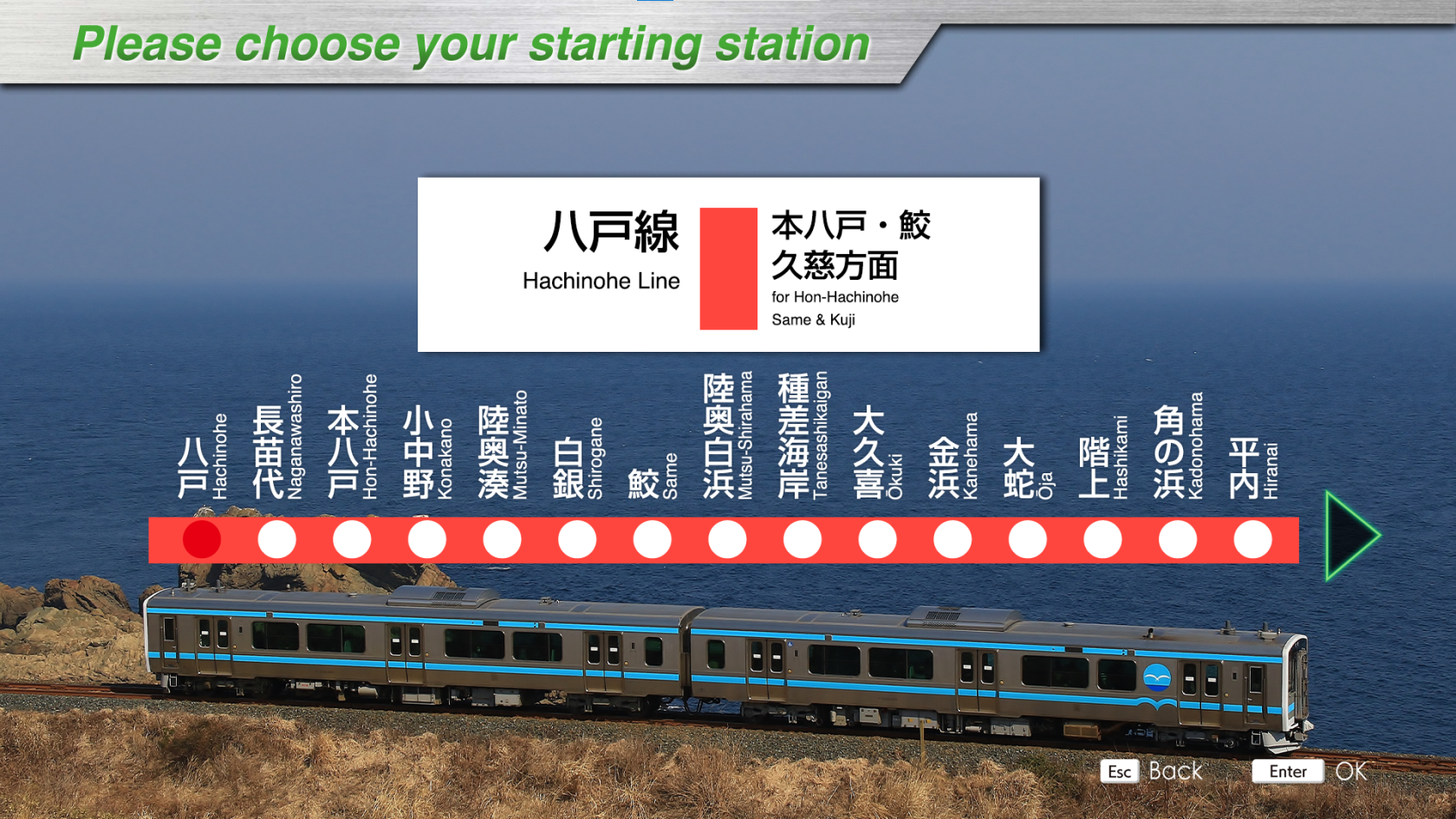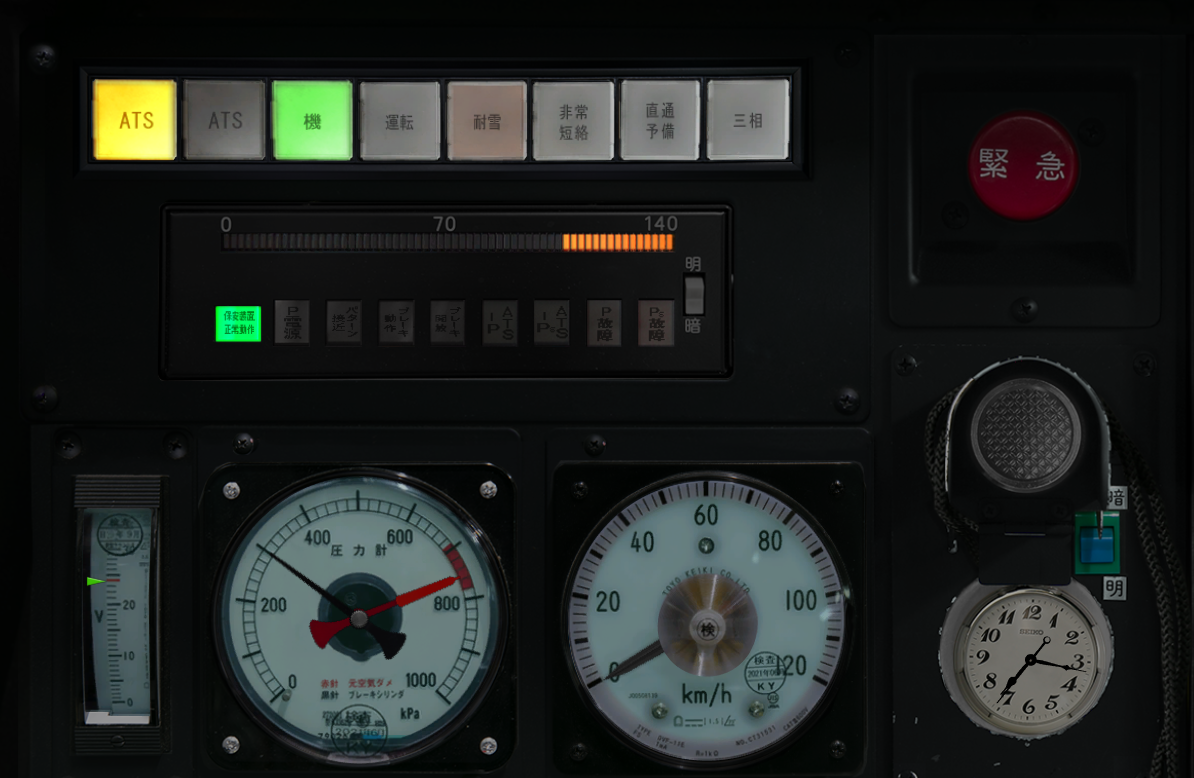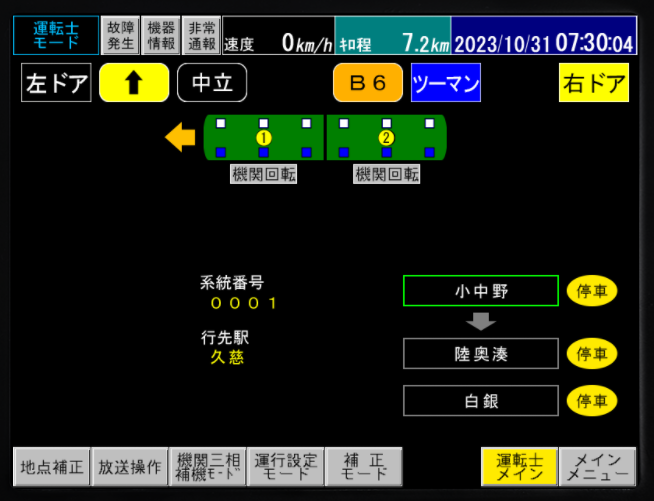Hachinohe Line
Introducing
The Hachinohe Line connects Hachinohe Station in Hachinohe City, Aomori Prefecture with Kuji Station in Kuji City, Iwate Prefecture.
The line was first opened in 1894 between Shiriuchi Station (now Hachinohe Station) and Hachinohe Station (now Hon'hachinohe Station), and was repeatedly extended and opened to service until 1930, when the line was extended to Kuji Station, bringing the Hachinohe Line into full service.
With the opening of the Tohoku Shinkansen bullet train line extension between Hachinohe and Shin-Aomori stations in December 2010, the line between Hachinohe and Aomori stations, which had previously been on the Tohoku Main Line, was transferred to Aomori Railway, and is now a line with no connections to other JR conventional lines.
In October 2013, "TOHOKU EMOTION," a sightseeing train with a restaurant space throughout the train, began operation between Hachinohe and Kuji Stations, mainly on Saturdays and holidays.
The train line is divided into two separate lines: one between Hachinohe Station and Same Station for urban transportation, and the other between Hachinohe and Kuji Station for interregional transportation.
The majority of the route runs along the coastline, including the Tanezaki Coast, a national scenic beauty spot and a breeding ground for petrels. From Hachinohe Station to Same Station, the line runs through factories and urban areas; from Same Station to Rikuchu-Nakano Station, it runs through rural areas and along the Pacific Ocean; and from Rikuchu-Nakano Station to Kuji Station, it runs through hilly areas. Some sections of the line offer views of the ocean, making it a popular route for passengers to see the ocean from the train windows.
Key data
- Line length: 64.9 km
- Number of stations: 24
- Safety system: ATS-Ps
- Train model: Kiha E130-500
- Max speed:
- Hachinohe ~ Kuji: 85 km/h
- Max speed after signals:
- Reduced speed (green/yellow): 65 km/h
- Caution (yellow): 45 km/h
- Speed restriction (yellow/yellow): 25 km/h
- Routes:
- Hachinohe ~ Kuji (429D): "Local" - 2 cars - 24 stations - 64.9 km
- Hachinohe ~ Same (1431D): "Local" - 2 cars - 7 stations - 11.8 km
- Hachinohe ~ Kuji (441D): "Local" - 2 cars - 24 stations - 64.9 km
- Hachinohe ~ Same (1447D): "Local" - 2 cars - 7 stations - 11.8 km
As schedules are not available on the DICS screen, we recommend using the timetables or displaying the STA indicator.
On this line, train departure is only authorized when the buzzer sounds. The buzzer sounds when the conductor validates departure.
Console detail
On the left-hand side of the console, you'll find :
- At the top, various indicators. In this order :
- ATS (yellow): Lit when the ATS is operating.
- ATS (red): Lit when ATS is triggered.
- Motor (機): Lit when motor is powered
- Running (運転): Lit when engine is running
- Snow resistance (耐雪)
- Emergency short circuit (非常短絡)
- Safety Brakes (直通予備)
- 3-phase (三相)
- Below is the ATS-P/Ps panel
- Bottom left, the internal tension
- Then the brake cylinder pressure (black arrow) and compressed air reservoir pressure(red arrow) dial
- Then the speed dial
- And finally, the door-closing indicator and pocket watch.
DICS screen (Diesel car Information Control System)
Below are various indications:
- Left door (左ドア): Indicates whether the left doors should be opened at the next station.
- Direction of travel, at motor level.
- Transmission position: Neutral (中性), shift (変速), direct connection (直結).
- Speed suppression indicator, present if active (抑速1 / 抑速2)
- Power/brake lever position
- One-person operation (ワンマン) or Two-persons operation (ツーマン)
- Right door (右ドア): Indicates whether the right doors should be opened at the next station.
Next comes the representation of the train. The squares represent the doors (right at the top, left at the bottom). The square is white if the door is open, otherwise blue. The "engine running" indicator (機関回転) shows whether the car's engine is running.
Finally, at the bottom is a "system identifier" and the destination station (Kuji - 久慈). On the right, you'll find the current station and the next 2 stations, with the stop or passage indicator.
Movie
Useful links
Wikipedia: https://en.wikipedia.org/wiki/Hachinohe_Line
Driver's Guide: https://docs.google.com/spreadsheets/d/1H7R4lfMNA8EnuSvzVVlOHqA-_LYPZ6TjGbp_C1YqVuQ/edit#gid=261872662
Timetables (in japanese):
- Hachinohe ~ Kuji (429D) : https://docs.google.com/spreadsheets/d/1H7R4lfMNA8EnuSvzVVlOHqA-_LYPZ6TjGbp_C1YqVuQ/edit#gid=1421452860
- Hachinohe ~ Same (1431D) : https://docs.google.com/spreadsheets/d/1H7R4lfMNA8EnuSvzVVlOHqA-_LYPZ6TjGbp_C1YqVuQ/edit#gid=770400459
- Hachinohe ~ Kuji (441D) : https://docs.google.com/spreadsheets/d/1H7R4lfMNA8EnuSvzVVlOHqA-_LYPZ6TjGbp_C1YqVuQ/edit#gid=1330843814
- Hachinohe ~ Same (1447D) : https://docs.google.com/spreadsheets/d/1H7R4lfMNA8EnuSvzVVlOHqA-_LYPZ6TjGbp_C1YqVuQ/edit#gid=1542655935



